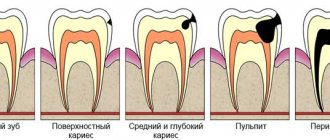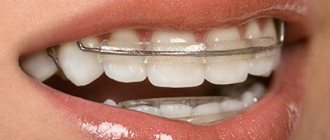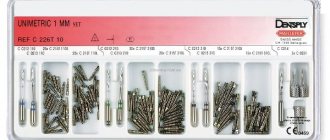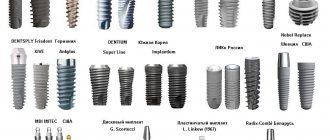From this article you will learn:
- how is tartar formed?
- Is it possible to remove tartar at home,
- which will help reduce the amount of dental plaque.
The article was written by a dentist with more than 19 years of experience.
The ability to remove plaque at home will depend on its type. For example, you can use special products, which we will discuss below, to remove not too massive pigment plaque that occurs in smokers and lovers of too strong tea or coffee. As for removing plaque, using a regular toothbrush and toothpaste only removes soft microbial plaque well. Removing partially mineralized plaque, and especially tartar, requires the use of special means.
With irregular oral hygiene, soft microbial plaque that is not removed from the teeth in time begins to gradually mineralize (absorbing calcium salts from saliva), turning into hard tartar. It will no longer be possible to remove tartar at home if it is completely mineralized or large in size. But if you have a smoker’s pigment plaque, or the microbial plaque is only partially mineralized and therefore has a loose consistency, then for these cases there is one fairly effective method.
Hard dental plaque: photo
Such dental deposits (tartar) as in Fig. 1-3 can only be removed at the dentist by signing up for an ultrasonic teeth cleaning procedure. Only partially mineralized stone, which is small in size and has a loose consistency, can be removed at home - and all this applies only to supragingival dental plaque. Subgingival tartar, which is present in almost all patients with gum disease, can only be removed by a dentist.
So what can replace a visit to the dentist if you have smoker plaque or a small amount of tartar. A combination of an Oral-b electric brush and a special teeth polisher will help us with this. Let us remind you that Oral-b toothbrushes are made on the principle of a dentist’s instrument, which the doctor uses to remove plaque and the remains of hard dental deposits. You will probably remember how, after the ultrasonic cleaning procedure, the doctor polished your teeth with a rotating attachment with bristles and polishing paste. And we will do the same.
So, for this we need:
- electric brush from Oral-b,
- special toothpaste.
What kind of remedy is this?
If ultrasound or mechanical teeth cleaning are contraindicated, a chemical method is used . Modern means of chemical treatment include Scaling gel. It is an alternative method if it is not possible to use medical instruments to remove hard deposits from teeth.
The drug is used to clean teeth of unnecessary stones in adults and to dissolve greenish plaque in children.
The effect of this dental gel is based on the fact that it is able to soften the hard tissue of dental plaque , which subsequently dissolves. The tooth enamel remains intact.
The drug consists of special particles that, when applied to teeth, stain damaged tissue. This makes diagnosis easier.
The dental product, in addition to all of the above, has good whitening properties. This effect can persist in patients with constant oral hygiene for about three months. The drug is very easy to use and has a very affordable price.
The drug contains the following components:
- silica;
- distilled water;
- iodine-containing substance “potassium iodide”;
- hydrochloric acid;
- polyhydric alcohols;
- special thickener;
Tools for polishing the surface of teeth
Polishing the surface of teeth
It is usually performed after removing dental plaque to ensure a smooth surface that prevents plaque retention. Polishing also permanently removes small fragments of mineralized dental plaque and stains on the teeth. The disadvantage of most types of enamel surface polishing is the complete or partial removal of its surface layer, enriched with fluorides. Therefore, it is advisable to treat the polished surface with fluorine-containing solutions.
For polishing, special rotating rubber cups (caps) and end brushes, polishing strips, and flosses can be used.
Soft rubber polishing caps can be completely hollow or with projections (ribs; Fig. 126, A), bridges (Fig. 126, B) or reverse spiral projections on the inner (Fig. 126, B) or outer (Fig. 126, D) surfaces. There are cups with a miniature nylon brush mounted inside (Fig. 126, E). In Fig. 127 different types of polishing cups
(caps).
The caps are fixed in the contra-angle handpiece, filled with polishing paste and polished smooth, sometimes occlusal, surfaces of the teeth at a rotation speed of 2000-5000 rpm (Fig. 128). The cups can be equipped with protective shields to prevent paste from entering the tip head. Cup-to-handpiece fixation systems
can be conventional (for caps equipped with a standard shank for a contra-angle tip, Fig. 129, A) or provide for fixation through special holders (threaded mandrels, Fig. 129, B, or with a disk, Fig. 129, C). Cups can be of different hardness. Thus, soft caps from Densco are blue, medium-hard caps are white, and hard caps are yellow. Edenta's blue superfine preventive polishers can be used without paste at a rotation speed of 5000 rpm, white cups for pastes at 2000 rpm.
For polishing chewing surfaces, it is convenient to use rotating brushes with polishing paste. Brushes can also be used on smooth surfaces that have stains.
To clean the interdental spaces,
thin, flexible, flat-shaped EVA polishing heads
made of wood or plastic are used. When using the EVA system, the interdental spaces are cleaned due to vibrating longitudinal vibrations, which are transmitted to the working part (Fig. 130). Another method for removing plaque from the proximal surfaces of teeth is to use aluminum oxide-coated polishing strips, also used for polishing composite fillings. Flat dental floss or strips of polishing paste, as well as rubber polishing cones for the dental handpiece, can also be used for this purpose.
For cleaning and polishing tooth surfaces, the S.E.T. company proposed the S.E.T.-Prophy-Leader tip - a special tip that provides up-down vertical movement and rotation up to 180° clockwise and counterclockwise (2500 movements per minute; Fig. 132). Special tools (green and brown polishers, brushes) with a curved shank have been developed for the tip.
Indications for use
The properties that this gel has determine its use for the purpose of cleansing hard plaque on teeth, even in the complex therapy of periodontal disease in adults.
Teeth affected by periodontal disease are most often mobile, so it is quite difficult to remove hard deposits from them. There is a risk of damage to the teeth themselves.
Products such as abrasive paste are not suitable, which is why they resort to using gel. It removes stones painlessly.
The coloring elements included in the gel can be used to find damage that is difficult to identify using other methods. They change the color of both healthy and damaged tissue for some time.
“Scaling” can also be used to remove stones in children. It is absolutely safe.
Teeth cleaning from tartar in the clinic
In dentistry, to remove tartar, you can use the service of professional teeth cleaning (or professional oral hygiene). This service is available in almost all dental clinics. Several professional methods are used to remove tartar:
- Ultrasonic cleaning. This is the most accessible and widespread method. The doctor uses a special device - a scaler. It creates low-frequency vibrations that gently peel away hard deposits from the enamel. The doctor then uses water and air pressure to cleanse the mouth. Ultrasound is suitable for both supragingival and subgingival deposits. This method is safe for enamel and gums. At the end of the procedure, the dentist polishes and fluorides the teeth to reduce sensitivity and strengthen them.
- Laser cleaning. The procedure is similar to ultrasonic cleaning, the only difference is in the device used. Laser is considered a more modern method, effective and safe. The advantage of this method is that the laser promotes rapid gum regeneration and has an antibacterial effect.
- Air Flow. A modern way to clean the mouth. More expensive compared to the first two options. For cleaning, the doctor uses a pressure consisting of water, air and sodium carbonate. This method differs in that in addition to removing tartar, the enamel is also lightened.
There are also options for chemical and mechanical cleaning, but due to their traumatic nature and low efficiency, modern clinics do not use them.
Contraindications
Contraindications include intolerance to any individual component included in the dental gel. For example, an allergic reaction to potassium iodides. And also contraindications common to all cleaning methods:
- infectious processes occurring in the gums;
- acute respiratory viral infections;
- special sensitivity of tooth enamel or damage to it;
- pregnancy in the last months.
All of the listed contraindications can be eliminated or adjusted.
How to remove tartar at home
On the Internet you will find a dozen options for quickly removing tartar using available means: soda, hydrogen peroxide, vinegar, salt, herbal decoctions. We strongly do not recommend using any of them, because they are all ineffective and potentially dangerous. Why you can’t use home methods for removing tartar:
- When using soda and salt, abrasive particles damage the enamel.
- Solutions with vinegar and soda can damage the mucous membrane and cause burns.
- These methods are ineffective. For example, subgingival deposits can only be removed in the dentist's office.
- Herbal decoctions can stain the enamel, after which whitening will be required.
- Partial destruction of the enamel is possible.
- It is very easy to go overboard with the exposure time or dosage of these products.
Mode of application
- At the initial stage of the procedure for cleaning tartar, it is necessary to prevent the substance from getting on the gums.
- Then one of the syringes with the contents of the gel is taken from the package and the cap is removed from the instrument. A metal cannula, called an applicator, is placed on the syringe.
- Using applied force, the gel is squeezed onto the affected area with hard dental plaque that requires treatment. The product should be left to act on tartar for 35-40 seconds.
- Then the gel is removed from the surface to be treated with special tools and thoroughly washed with water.
- After the cleaning process, you need to remove the cannula from the syringe and close the instrument with a special cap.
In particularly difficult cases, it is recommended to perform dental procedures several times to achieve the desired effect. At the same time, do not forget to always protect the gums from getting the gel on it.
It must be remembered that Scaling gel is used exclusively in medical clinics. Do not use the drug at home.
You should know that after the plaque cleaning procedure, it is important to carefully follow strict oral care recommendations . They should include daily (morning and evening) brushing of teeth, gums and tongue, as one of the sources of decomposition of various microorganisms.
There is no need to be overzealous with eating foods that are colored or contain a lot of carbohydrates. This can leave pigmentation on the enamel and promote bacterial deposits. If, after scaling, bad breath appears again after several months, you must repeat this stone removal procedure again.
Causes of tartar
Stone is a common problem; it forms in all people due to the peculiarities of the modern lifestyle. But the speed at which it appears is different for everyone. Hard plaque forms faster as a result of the following factors:
- insufficient oral hygiene;
- predominance of soft foods, sugar and fast carbohydrates in the diet;
- uneven chewing of food on each side of the jaw;
- excessive consumption of black tea and coffee;
- smoking;
- metabolic disease;
- saliva is too viscous.
In what cases does stone plaque form?
The reason for the formation of tartar is poor quality dental care, in which soft plaque is not completely removed. High mineral content causes plaque to harden. Using a too soft toothbrush, lack of attention to the interdental spaces and gum margins, irregular oral hygiene, etc. are the main sources of the problem.
But there are factors that increase the likelihood of hard deposits forming on teeth:
- diseases of the digestive system and endocrine system, in which the chemical composition of saliva changes;
- malocclusions and dental defects that form particularly difficult areas to clean;
- wearing dentures, braces, brackets, plates and other structures that make it difficult to properly clean teeth using a traditional brush and paste;
- a large amount of carbohydrate foods in the diet, which facilitates the gluing of soft plaque particles.
Review of some liquid prostheses based on sodium hyaluronate
1. Gialgan Phidias
One of the most affordable products with a very low molecular weight, which is an aqueous solution of hyaluronic acid. The fluid is quickly distributed in the joint capsule, but is also quickly absorbed into the ligaments and adjacent muscles. A local reaction is possible within 24 hours after administration.
Some liquid hyaluronic acid-based prostheses lead to swelling and redness of the skin
2. Duralan
A product with a low molecular weight is recommended for use during remission - to maintain joints. In large ones, a dosage of 3 ml is administered, in small ones - 1 ml, in courses with an interval of six months.
3. Fermatron
The drug is indicated for moderate forms of osteoarthritis and is available in sealed glass syringes with a volume of 2 ml. The medicine is not patented, so its pharmacokinetics have not been studied enough. There are virtually no clinical indications regarding interactions with other medications. The drug, however, is approved for use during pregnancy and lactation, although many doctors prohibit its administration during pregnancy, as well as in patients under 18 years of age.
The maximum period of action of Fermatron is up to 6 months
4. Adantom
Produced by a Japanese pharmaceutical company in syringes, it contains 25 milligrams of the active substance - sodium hyaluron. Before administration, the viscoelastic agent is warmed and injected using a 22G needle.
5. Sinokrom
A special feature of this medication is a specialized lock on the disposable syringe, which prevents accidental opening of the container. The product is administered in a course of six injections every one week. Manufacturer: Austrian pharmaceutical company.
6. Ostenil
This Swiss development is also based on hyaluronic acid. The drug must be stored in a cool, dry place, and before administration, make sure the syringe is tight. Hyaluronate and mannitol in the product protect joints from free radicals, which somewhat prolongs the duration of the medication. The course involves at least 3-5 injections. After each of them, a burning sensation is possible, which is eliminated with ice.
7. Hyastat
One of the Russian developments, produced in a sterile disposable syringe with a capacity of 20 milligrams. Before administration, the patient is always given an x-ray of the joint, and general clinical blood and urine tests are taken to exclude inflammatory processes in the body. If the outcome is positive, the course of treatment is repeated after a year.
Giastat is administered in courses of 3-5 injections at intervals of several months.
8. Go On
Another product based on sodium hyaluronate, which demonstrates stable positive dynamics in the treatment of arthrosis and osteoarthritis. Used to replenish synovial fluid deficiency.
9. Synvisc
Biological analogue of hyaluronic acid with high molecular weight – 6,000,000 Daltons. For the treatment of arthrosis of the knee joint, 3 injections are recommended at intervals of a week. For diseases of the hip, shoulder or ankle joint, one injection is performed, and to achieve a better effect, a second one is performed 1-3 months later. The effect, according to clinical indications, is on average up to 26 weeks, with a maximum of 52 weeks in the treatment of knee osteoarthritis.
Synvisc – a drug with maximum molecular weight – lasts from 6 to 12 months










